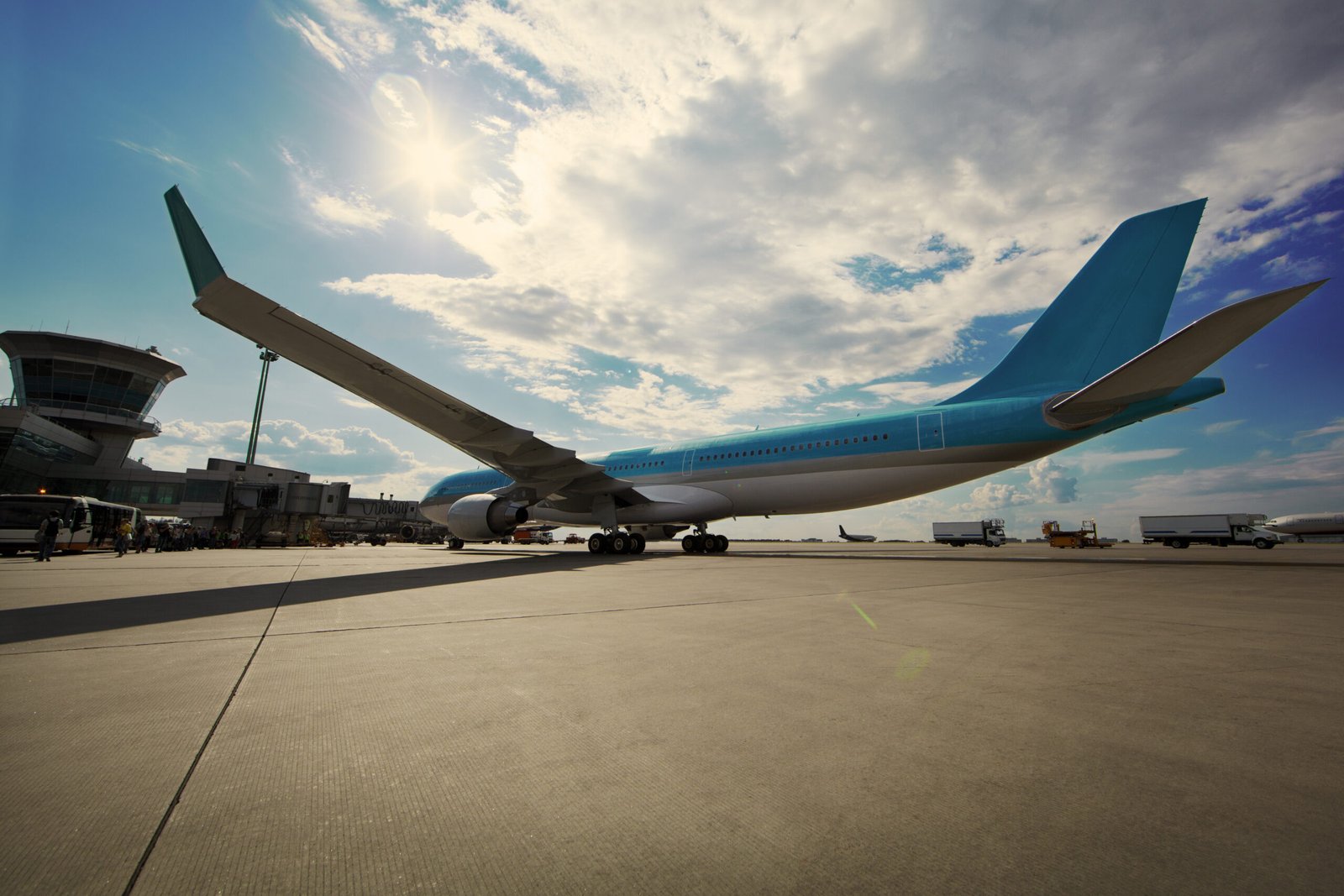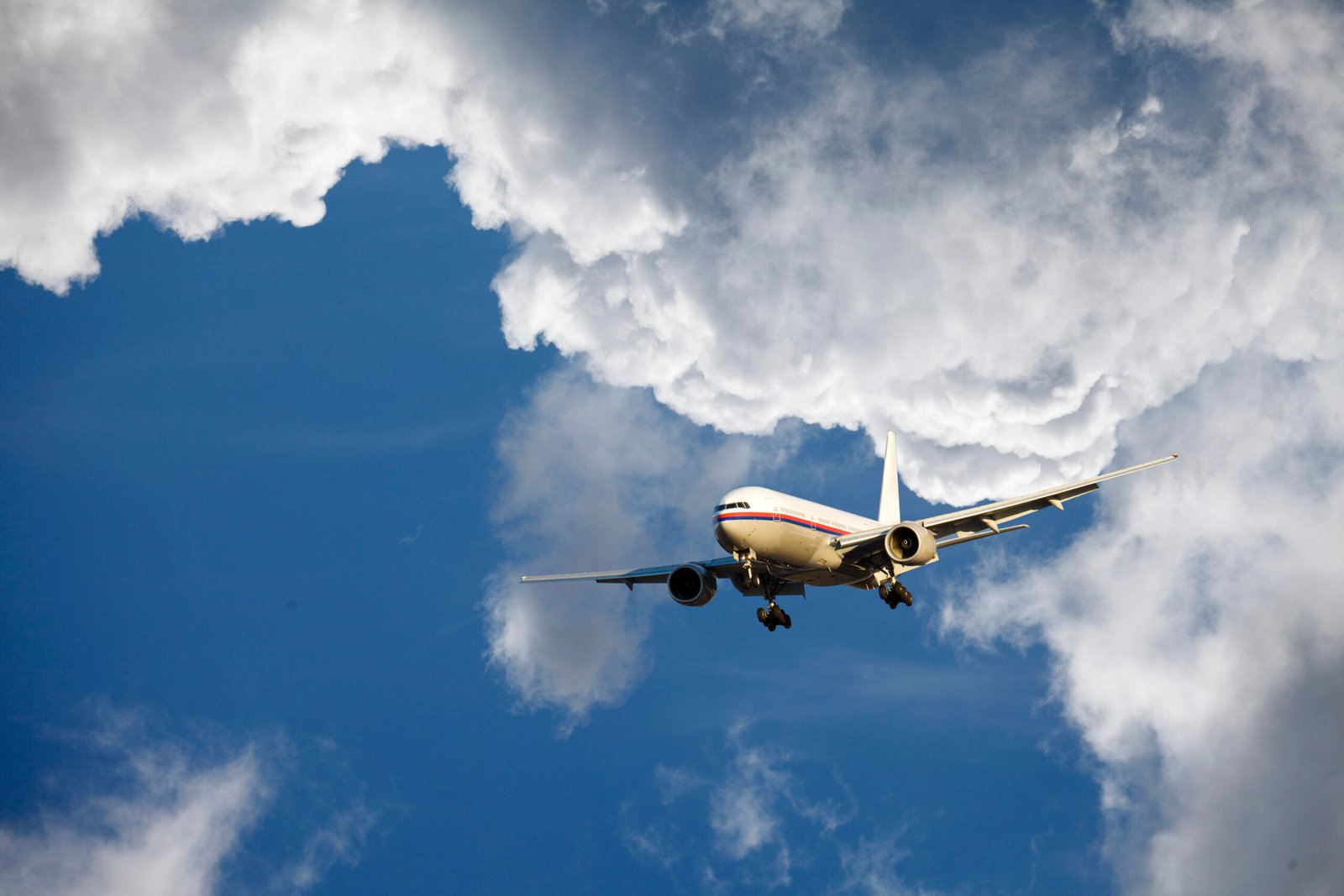pilot training
Flight Patterns: The Fascinating Evolution of Air Travel Through the Decades
Aviation, an industry that has revolutionized the way we traverse our planet, has undergone a remarkable transformation over the decades. From its humble beginnings in the early 20th century to today’s advanced technologies and training programs, air travel continues to evolve. One aspect that stands out in this evolution is the education and training of aspiring aviators. With various aviation schools offering specialized courses, enthusiasts can now navigate their way into a sky-high career.

When it comes to aviation education, there are several types of courses available tailored to different interests and career paths. For those aiming to become pilots, flight training schools provide comprehensive programs ranging from Private Pilot Licenses (PPL) to Airline Transport Pilot Licenses (ATPL). These courses cover everything from basic aerodynamics and meteorology to complex navigation techniques. Additionally, aspiring mechanics can enroll in Aircraft Maintenance Engineering programs that delve into aircraft systems, repairs, and regulatory compliance.
For individuals interested in air traffic control or aviation management, specialized courses are offered at various institutions. Air Traffic Control programs focus on communication protocols and safety regulations essential for maintaining order in busy airspaces. Similarly, Aviation Management degrees encompass business principles applied specifically within the aviation sector—preparing students for roles in airport operations or airline management.
Beyond formal education, numerous resources exist online for those seeking knowledge about aviation trends and news. Blogs like “The Points Guy” offer tips on maximizing travel rewards while providing insights into airlines’ latest offerings. Websites such as FlightAware allow users to track real-time flights globally—a fascinating tool for both enthusiasts and professionals alike.

Social media platforms have also become invaluable for aviation aficionados. Instagram accounts like @aviationdaily showcase stunning imagery from around the world—capturing breathtaking views of airplanes in flight or ground handling operations. Twitter hashtags such as #AvGeek unite individuals who share a passion for all things airborne; it’s a community where one can exchange experiences or learn about upcoming events.
In addition to traditional flight schools, FAA-approved flight training centers have gained prominence across the nation. These certified facilities adhere strictly to Federal Aviation Administration regulations while providing top-notch training using state-of-the-art simulators alongside actual flight experiences. Simulators play an integral role in modern pilot education by allowing students to practice emergency scenarios without jeopardizing safety. This innovative approach enhances skill development while building confidence before stepping into an actual cockpit.
Moreover, many FAA-approved flight schools offer programs designed for every level—from beginners taking their first lessons to seasoned pilots looking to upgrade their certifications or ratings. Each program is crafted with rigorous standards ensuring graduates are well-prepared for their careers ahead.
As we look back through decades of progress within air travel—from wooden biplanes soaring above fields to sleek jets cruising at high altitudes—it’s evident that ongoing education remains crucial for anyone wishing to soar in this dynamic field. Whether you’re passionate about piloting planes or fascinated by managing airport operations, today’s diverse array of aviation courses equips learners with necessary skills while connecting them with vibrant communities eager to share insights along their journey through the skies.
Embrace your inner aviator; explore these educational avenues and resources as you chart your own course through the thrilling world of aviation!
Navigating the Skies: A Beginner’s Guide to Understanding Aviation
Embarking on a journey into the world of aviation can be exhilarating yet overwhelming. With so many paths one can take, it’s crucial to understand the various options available. From specialized schools to an abundance of online resources, this guide aims to illuminate your route through the skies.
### Types of Aviation Schools and Courses
When considering a career in aviation, the first step is selecting the right type of school. Here are some key categories:
1. **Flight Schools**: These institutions focus primarily on training pilots. They offer programs ranging from private pilot certificates to commercial licenses and even advanced ratings for instrument flying.
2. **Airline Transport Pilot (ATP) Schools**: For those aspiring to fly for commercial airlines, ATP schools provide intensive training specifically tailored for airline operations, including multi-engine flying and crew resource management.

3. **Aviation Maintenance Schools**: If you’re more interested in keeping aircraft in top shape rather than piloting them, consider enrolling in an aviation maintenance program. Here, students learn about airframe and powerplant systems, gaining skills necessary for FAA certifications.
4. **Aerospace Engineering Programs**: Universities often feature degree programs focused on aerospace engineering—perfect for those who wish to design and develop aircraft or spacecraft.
5. **Air Traffic Control Training Programs**: These courses prepare individuals for careers as air traffic controllers, teaching them how to manage aircraft safely within controlled airspace.
6. **Simulator Training Facilities**: Many flight schools now utilize advanced simulators that replicate real flying conditions without leaving the ground—ideal for practicing maneuvers or preparing for exams.
### Top Aviation Blogs and Websites
Staying informed about aviation trends is vital for any aspiring aviator or enthusiast. Here are some excellent blogs and websites worth bookmarking:
**AOPA (Aircraft Owners and Pilots Association)**: An invaluable resource packed with articles on flying tips, legal regulations, and industry news.
**Airliners.net**: A vast repository of photographs and forums where aviation enthusiasts share their experiences.
**Flying Magazine**: This publication covers everything from pilot techniques to product reviews.
**Pilot’s Digest**: A blog that offers insights into pilot life while emphasizing safety practices.
**AvWeb**: Focused on news relevant to pilots, AvWeb also features podcasts covering current topics in aviation.
For social media aficionados:
Follow hashtags like #aviationlife or #pilotlife on Instagram for stunning visuals from fellow aviators.
Join Facebook groups such as “Pilots Without Borders” or “Women in Aviation” to network with others who share your passion.
### FAA Flight Schools & Simulators
The Federal Aviation Administration (FAA) maintains a comprehensive list of accredited flight schools across the country—each providing different specialties tailored to student needs. When searching for a suitable school, look out for those that offer both ground instruction and simulator training; these elements combine theoretical knowledge with practical application effectively.

Moreover, utilizing high-quality flight simulators can significantly enhance your learning experience by allowing you to practice critical scenarios without real-world risks involved. Many reputable schools incorporate state-of-the-art technology into their curricula that mimic actual cockpit environments.
In conclusion, understanding aviation is not merely about dreaming of soaring through clouds but involves meticulous planning and education. By exploring various types of schools, engaging with numerous online platforms dedicated to this field, and taking advantage of FAA resources—and perhaps even virtual simulators—you’re well on your way toward conquering the skies! Remember that every seasoned pilot once started just where you are now—so buckle up; adventure awaits!
From Runway to Cloud: The Journey of an Airline Pilot
Becoming an airline pilot is a dream that dances in the minds of many aviation enthusiasts. But the journey from runway to cloud is paved with rigorous training, education, and passion. Let’s explore the diverse educational paths available for aspiring pilots, valuable online resources, and the critical role of FAA-approved flight schools.
*Aviation Schools by Types of Courses**
When it comes to pursuing a career in aviation, the choices can be overwhelming. Aviation schools offer various courses catering to different aspirations within the field:
1. **Private Pilot License (PPL) Programs:** These courses introduce students to fundamental flight principles, including navigation and aircraft operations. Ideal for those who want to fly recreationally or gain foundational skills.
2. **Commercial Pilot License (CPL) Courses:** For those aiming to make flying their profession, CPL programs dive deeper into advanced flying techniques, regulations, and flight planning.
3. **Airline Transport Pilot (ATP) Certification:** This is often regarded as the pinnacle of pilot certifications. ATP courses prepare candidates for positions with airlines and cover extensive knowledge on multi-engine operations and complex aircraft systems.
4. **Flight Instructor Ratings:** Many pilots choose to become Certified Flight Instructors (CFI) after obtaining their CPL or ATP credentials. This path allows them not only to gain hours but also share their passion for flying with future aviators.
5. **Specialized Training Programs:** These include courses on specific aircraft types or advanced maneuvers such as aerobatics or bush flying—perfect for those looking to specialize further.
*A List of Aviation Blogs, Websites, and Social Media Sites**
In this digital age, staying informed about trends in aviation is easier than ever! Here are some must-follow blogs and websites:
**Airline Reporter:** This blog covers airline news with a focus on technology and travel experiences.
**AvWeb:** A comprehensive source for aviation news that includes articles on safety issues and industry updates.
**Flying Magazine:** A well-respected publication that offers insights into pilot training, aircraft reviews, and real-life flying stories.
For social media enthusiasts:
**Instagram (@aviationdaily):** Follow stunning aerial photography showcasing breathtaking views from above.
**Twitter (@airlinepilotlife):** Tweets from airline pilots sharing day-to-day experiences in the cockpit.
**YouTube Channels like “Captain Joe” provide educational content alongside entertaining vlogs about life as a pilot.
*FAA Flight Schools/Airplane Schools/Simulators**
Navigating through your choices requires attention when selecting an FAA-approved flight school. These institutions adhere strictly to federal regulations ensuring high training standards:
**Part 61 vs Part 141 Schools:** Part 61 schools offer more flexible schedules tailored for working individuals while Part 141 schools provide structured curriculums ideal for full-time students aiming at quicker completion times.
**Simulator Training Facilities:** With advancements in technology, many flight schools incorporate advanced flight simulators into their curricula. Simulators allow students to practice emergency procedures safely without leaving the ground—an invaluable part of modern pilot training.
As you embark on this fascinating journey toward becoming an airline pilot—from mastering theoretical knowledge at a classroom desk to soaring through clouds—it’s essential to immerse yourself fully in both educational resources and community connections within aviation circles. Each step taken builds towards that exhilarating moment when you take control of an aircraft destined for horizons unknown!

Behind the Scenes of Aviation: A Day in the Life of an Airline Pilot
Ever wondered what it’s like to soar through the sky as an airline pilot? The journey begins long before takeoff, often in aviation schools where aspiring pilots gain essential knowledge and skills. These institutions offer a variety of courses tailored to different aspects of aviation. For instance, flight training can be divided into several key areas: private pilot training, instrument rating, commercial pilot certification, and airline transport pilot (ATP) preparation. Each course builds on the last, creating a comprehensive path toward a successful career in aviation.
Private pilot courses focus on foundational flying skills and regulations, allowing students to command small aircraft. As they progress to instrument ratings, they delve deeper into navigation and flying under various weather conditions. The commercial pilot course elevates students from recreational flying to professional standards, while ATP programs sharpen their skills for handling larger aircraft that operate in commercial airspace.
Once equipped with knowledge from these schools, many pilots turn to various online resources for continued learning and community engagement. Blogs and websites dedicated to aviation offer insights into industry trends, personal experiences, and technical advice that can prove invaluable. Some popular sites include Airliners.net for photography enthusiasts and Plane & Pilot Magazine for detailed articles covering everything from technical innovations to safety tips.
Social media platforms have also become vital tools for networking among pilots. Twitter hosts lively discussions about current events affecting aviation; Instagram showcases stunning aerial shots; LinkedIn connects professionals across the industry. Facebook groups create tight-knit communities where members share stories or seek advice—an excellent way for new pilots to learn from seasoned veterans.

However, education doesn’t stop at traditional classroom settings or online forums; FAA-certified flight schools play a significant role in shaping future aviators. These institutions provide hands-on training with experienced instructors who guide students through every aspect of flying—from pre-flight checks to landing procedures. Schools like Embry-Riddle Aeronautical University or Purdue University are renowned for their rigorous programs that emphasize both theoretical knowledge and practical application.
Simulators are another essential component of modern flight training. They allow students to practice various scenarios without leaving the ground—perfectly safe yet incredibly realistic environments where they can hone their skills under pressure. Whether it’s dealing with engine failure or navigating adverse weather conditions, simulators prepare pilots mentally for real-world challenges before they step into the cockpit of an actual aircraft.

As dawn breaks on a typical day in the life of an airline pilot, excitement fills the air—both literally and figuratively! After arriving at the airport early in the morning, pilots conduct thorough pre-flight checks alongside ground crew members. This meticulous attention ensures that every detail is accounted for before embarking on flights that may span thousands of miles.
The cockpit becomes their second home as they communicate with air traffic control while navigating complex routes above bustling cities and sprawling landscapes below them. Every landing represents not just a physical return but also an emotional one—a moment when dedication meets passion high above the clouds.
In conclusion, becoming an airline pilot involves much more than simply sitting behind controls; it requires extensive education through aviation schools offering diverse courses alongside invaluable resources available online today.
With commitment coupled with exploration within this dynamic field—the sky truly is not just a limit but rather a boundless horizon waiting to be discovered!
The Future of Air Travel: Innovations Shaping the Skies
As we soar into the future, the world of aviation is undergoing a remarkable transformation. New technologies, innovative educational programs, and social platforms dedicated to air travel are shaping how we think about flying. Whether you’re a seasoned pilot or an enthusiastic novice, understanding these changes can dramatically enhance your journey through the skies.
### Aviation Schools: A Diverse Curriculum
The foundation of any successful career in aviation begins with education. Aviation schools offer a variety of courses designed to meet diverse interests and career paths. Here’s a breakdown of some key types:
1. **Pilot Training Programs**: These programs focus on teaching individuals how to fly different aircraft types, ranging from small single-engine planes to larger commercial jets. Students learn not only about aerodynamics but also flight regulations and safety protocols.
2. **Aviation Management**: For those interested in the business side of air travel, aviation management courses provide insights into airport operations, airline management, and logistics. This path prepares students for leadership positions within the industry.
3. **Aircraft Maintenance Engineering**: Keeping airplanes in tip-top shape is critical for safety and efficiency. Programs in this field teach students about aircraft systems, repair techniques, and regulatory compliance.
4. **Air Traffic Control**: Aspiring air traffic controllers must undergo specialized training that emphasizes communication skills and quick decision-making under pressure.
5. **Unmanned Aerial Systems (UAS)**: With drones becoming increasingly prevalent in various sectors—ranging from delivery services to agriculture—courses focusing on UAS offer insight into piloting unmanned vehicles safely and effectively.
### Leading Resources for Aviation Enthusiasts
For anyone wanting to stay updated on aviation trends or connect with like-minded individuals, there are countless blogs, websites, and social media platforms available:
**Blogs**:
– *AirlineReporter*: This site dives into airline news while offering unique perspectives on flying experiences.
– *The Points Guy*: Focused primarily on travel points and frequent flyer programs but rich in overall travel advice.
– *Flying Magazine*: An informative resource for pilots covering everything from technical articles to personal stories.
**Websites**:
– *AOPA (Aircraft Owners and Pilots Association)*: A go-to hub for pilots seeking information about regulations, safety tips, and advocacy.
– *FlightAware*: Real-time flight tracking data that serves as both an informative tool for travelers as well as an educational resource for budding aviators.
**Social Media Platforms**:
– Instagram accounts like @aviationdaily showcase stunning aerial photography.
– Twitter hashtags such as #AvGeek foster vibrant discussions among aviation enthusiasts worldwide.
### FAA Flight Schools & Simulators
When it comes to gaining practical experience alongside theoretical knowledge, FAA-approved flight schools are essential. These institutions adhere strictly to federal guidelines ensuring high-quality training environments. They offer comprehensive programs featuring ground school instruction paired with hands-on flight training—often using advanced simulators that replicate real-world flying scenarios without leaving the ground.
Using flight simulators provides aspiring pilots invaluable practice while enhancing their skills in a controlled environment before taking to the skies themselves. From basic maneuvers to complex emergency situations, simulators prepare students for virtually any challenge they may encounter during actual flights.
In conclusion, the future of air travel is bright thanks to innovative educational opportunities and resources designed specifically for aspiring aviators. As technology evolves at lightning speed, so too will our methods of training pilots and managing air traffic—ensuring safe travels well into the next era of aviation!



